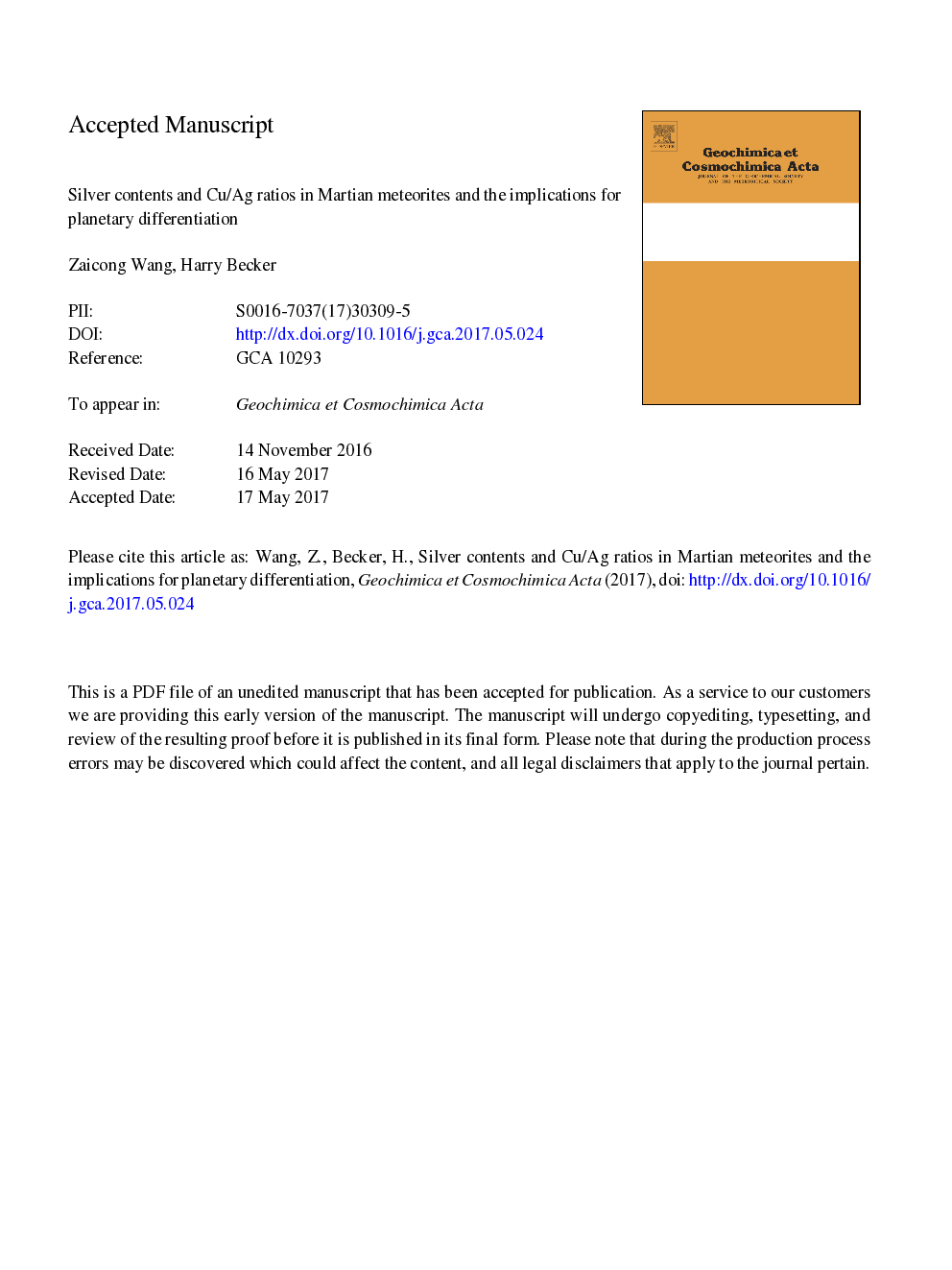| Article ID | Journal | Published Year | Pages | File Type |
|---|---|---|---|---|
| 5783111 | Geochimica et Cosmochimica Acta | 2017 | 56 Pages |
Abstract
Carbonaceous and enstatite chondrites display a limited range of Cu/Ag ratios of mostly 500-2400. Ordinary chondrites show a larger scatter of Cu/Ag up to 4500, which may have been caused by Ag redistribution during parent body metamorphism. The majority of chondrites have Cu/Ag ratios indistinguishable from the Martian mantle value, indicating that Martian core formation strongly depleted Cu and Ag contents, but probably did not significantly change the Cu/Ag ratio of the mantle compared to bulk Mars. Bulk Mars is richer in moderately volatile elements than Earth, however, the Martian mantle displays a much stronger depletion of the moderately volatile elements Cu and Ag, e.g., by a factor of 15 for Cu. This observation is consistent with experimental studies suggesting that core formation at low P-T conditions on Mars led to more siderophile behavior of Cu and Ag than at high P-T conditions as proposed for Earth. In contrast, Cu/Ag ratios of the mantles of Mars and Earth (Cu/AgEarth = 3500 ± 1000) display only a difference by a factor of 3, which implies restricted fractionation of Cu and Ag even at high P-T conditions. The concentration data support the notion that siderophile element partitioning during planetary core formation scales with the size of the planetary body, which is particularly important for the differentiation of large terrestrial planets such as Earth. Collectively, the Ag and Cu data on magmatic products from the mantles of Mars and Earth and the data on chondrites confirm experimental predictions and support the limited fractionation of Cu and Ag during planetary core formation and high-temperature magmatic evolution, and probably also in early solar nebular processes.
Related Topics
Physical Sciences and Engineering
Earth and Planetary Sciences
Geochemistry and Petrology
Authors
Zaicong Wang, Harry Becker,
